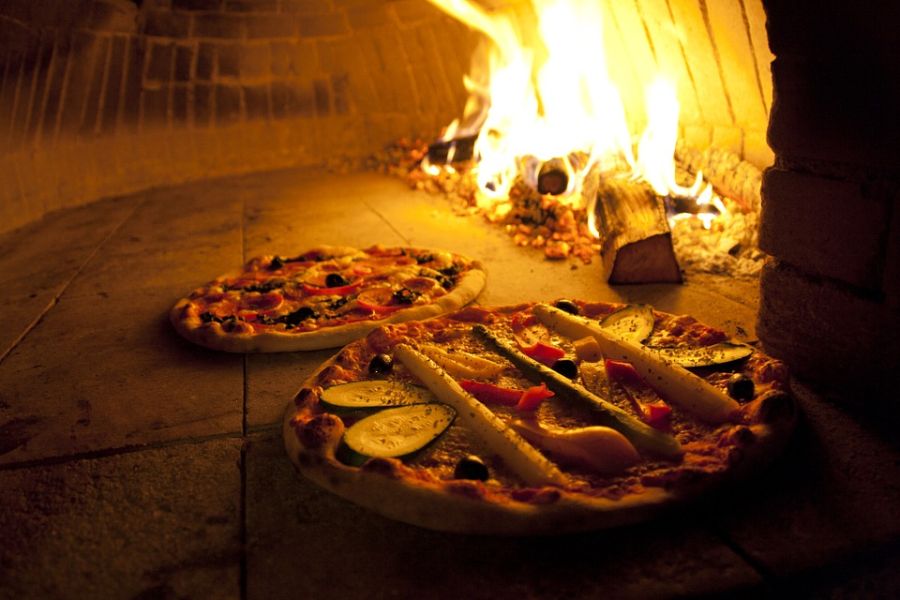Over the past several years, more and more people have begun the move to make their own homemade pizzas in an outdoor pizza oven. And there’s a good reason why that’s the case. Nothing beats the flavor of a pizza cooked perfectly using propane—or even better, using natural hardwood. Once a person takes the art of pizza-making from their kitchen and relocates it to an outdoor oven, they will soon see what all of the fuss is about.
However, what people need to keep in mind before they begin using an outdoor pizza oven is that they’re going to relearn their pizza technique. Making the perfect pizza in a natural gas outdoor pizza oven is very much different from making one in the basic oven of your kitchen. It takes a little bit more finesse and a little bit more patience. There’s also a bit of a learning curve, but that shouldn’t discourage you from giving it a try. As we said, it’s more than worth it.
In this article, we’re going to give you the advice you need to make the perfect pizza in your outdoor oven. Most of the tips that we’re going to share are for use with a wood-fired pizza oven, but they can be easily adapted to a propane-fire pizza. Now, let’s jump right into things and talk about getting started with your pizza oven. By the way, if you don’t own one yet check reviews on Poolside Chilling first.
Begin With The Right Wood
Obviously, anyone using a pizza oven that’s gas-fired isn’t going to have to worry about this section. For people who do have a wood-fired oven, it’s extremely important. The right wood can mean the difference between a tasty pizza and one that’s not so good. When using an outdoor pizza oven, just be sure to avoid softwoods such a pine or other types of conifers. You will want to use seasoned hardwoods (or hardwood pellets) made from oak, maple, birch, beech, walnut, or ash.
Get The Fire Started
Once you have selected your wood, start the fire using your favorite kindling. Kindling can include fire cubes, first sticks, or even balled-up newspaper. You just need to something to get that fire started. Just be sure to avoid using pine, woods that have been treated, or scrap woods such as particleboard.
Spread Out The Wood
Once the wood is burning, use an oven rake to push the burning wood to either side of the oven to ensure that it’s evenly distributed. This is also a good time to check on how the wood is burning. Ideally, you’re going to want to not just have burning embers, but you’ll also want to have a bit of flame as well. Now, close the door to the pizza oven and allow it to heat for approximately 15-minutes.
Check The Oven’s Temperature
Once the oven has been allowed to come to temperature, it’s time to make sure it isn’t too hot. Too many people heat their oven decks so high that it immediately burns the pizza once it’s been put on it. To check the deck to make sure it’s the right temperature, toss some flour on it. If the flour immediately catches on fire or begins to turn black, then the oven is too hot. Don’t worry, you can reduce the temperature of the oven by leaving the door open for about 15-minutes and then trying again.
If you’re using a brick pizza oven, then you’re going to want its internal temperature to be above 650-degrees Fahrenheit. To maintain a flame in a brick oven, it’s often necessary to add wood to it every 15-20 minutes or so.
For those of you who are using a propane or natural-gas-fired pizza oven, follow the instructions on your particular model. We would like to say consumers who own these types of ovens are going to want to keep in mind that they use quite a bit of gas to keep them running. However, gas-fired models are easier to start, burn cleanly, and hold their temperature well, but they don’t provide the pizzas with as much flavor. To combat that problem, add a few wood chips of your choice—if your particular oven model recommends it.
Remember, It Takes Practice
The last thing that we’d like to say for those people who are moving to use an outdoor pizza oven for the first time is that it’s going to take a bit of practice to become a master outdoor pizza maker. More than likely your first several pizzas are going to be inedible. Don’t worry, everyone goes through this stage because of this oven’s learning curve. You’ll improve in no time.
